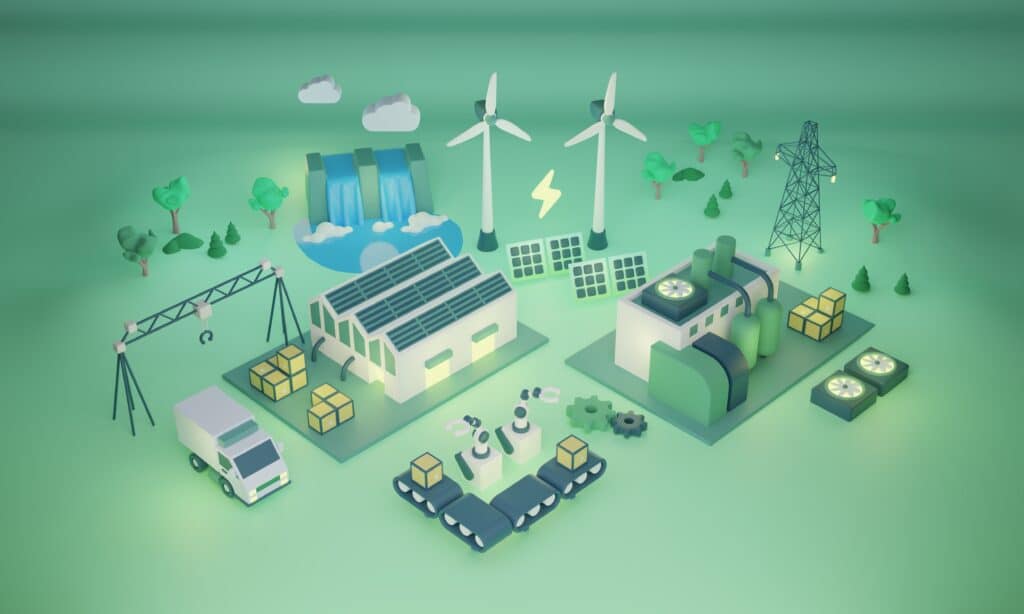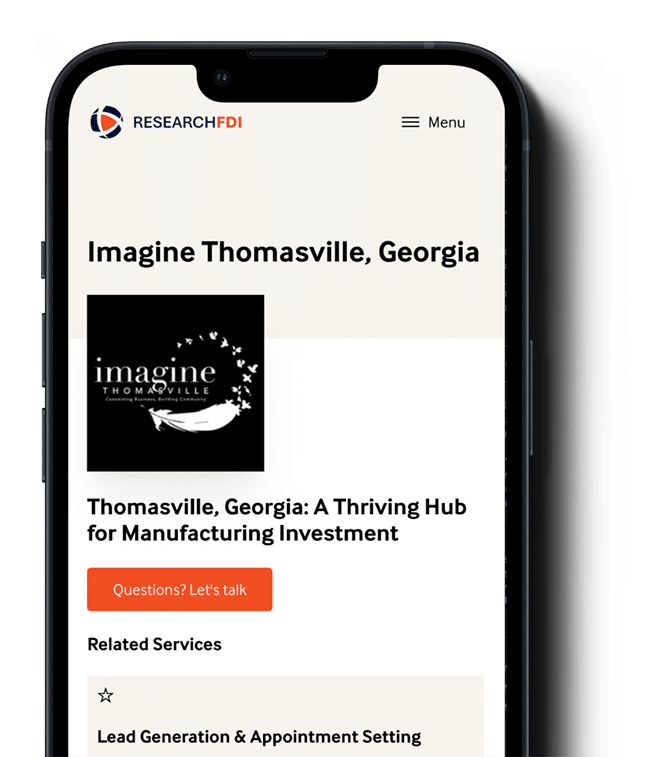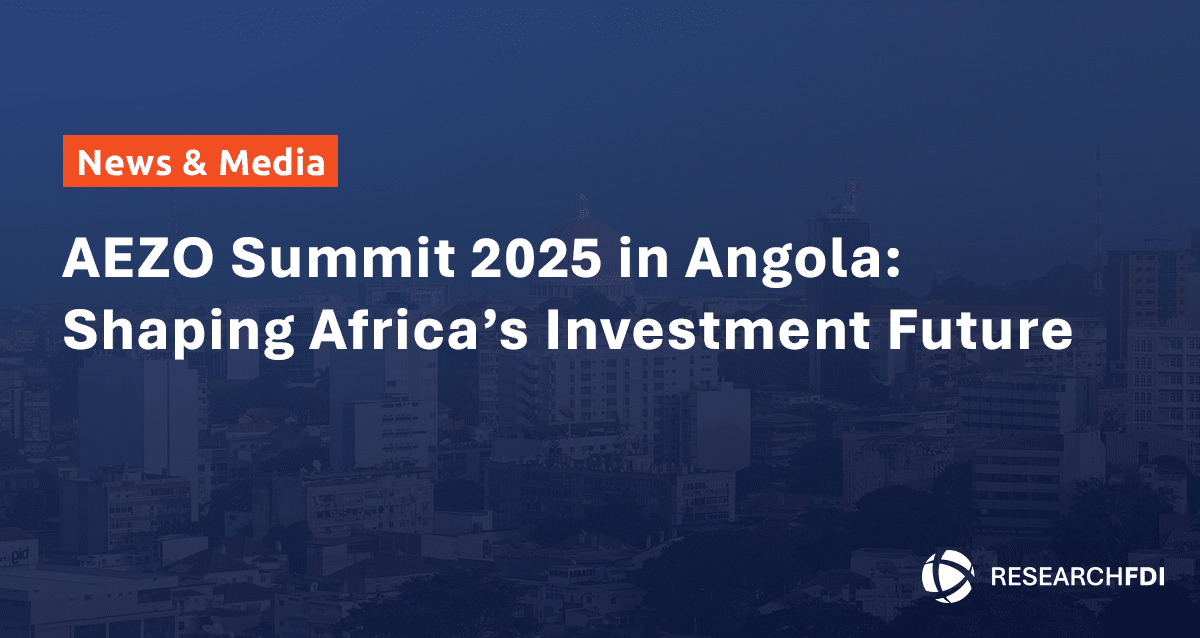Have you ever driven through a rural area and noticed the seemingly endless rows of wind turbines and solar panels? As it turns out, those rural skylines dotted with solar farms and wind turbines fuel more than just clean energy; they’re powering economic booms.
The Green Technology & Sustainability Market Report of 2025 forecasts the global green tech market reaching $73.9 billion by 2030, driven by AI and ESG (Environmental, Social, and Governance) compliance.
Unlike some other tech sectors, this growth in green tech isn’t confined to tech hubs like Silicon Valley. It’s transforming regions worldwide, making green technology a linchpin for economic growth in and beyond 2025.
For economic development leaders and policymakers, this shift signals opportunity: green technology economic growth translates to jobs, infrastructure, and regional sustainability investment on an unprecedented scale. Communities embracing these innovations aren’t just going green, they’re building thriving economies. Our blog today will explore how green tech is reshaping regional prosperity this year and what it means for your area’s future, shining (sometimes literally) with potential waiting to be unleashed.
The Green Tech Boom: Market Trends and Regional Impact

The green technology sector is experiencing a seismic shift, with economic ripples felt far beyond urban centers.
This isn’t just a tech story. It’s an economic revolution, with 2025 marking a pivotal year for regions to capitalize on this boom. Newly-emerging AI tools optimize energy systems (think smart grids predicting demand) while ESG mandates push companies to invest in sustainable practices, creating a perfect storm for regional growth.
Regional Benefits Unleashed
This market expansion translates into tangible benefits for regions willing to embrace green tech. First, job creation is booming. The report suggests AI-driven green tech could generate 1.5 million new jobs globally by 2030, with a significant share in regional hubs adopting these innovations. Roles range from renewable energy technicians to data analysts, boosting green tech jobs 2025 and beyond. Infrastructure upgrades follow suit. Regions installing solar farms or wind turbines modernize their grids, attracting businesses that need reliable power. A single wind farm project can spur $50 million in local infrastructure investment, revitalizing roads and utilities.Investment attraction is the third pillar. As companies chase ESG goals, regions with green tech credentials draw FDI like moths to a flame. A 2024 analysis estimated that regions with strong sustainability profiles saw 25 percent more investment than their less green counterparts. This isn’t theoretical—regions are already reaping rewards.
Case Studies: Regions Thriving with Green Technology
Green technology is transforming regions into economic and sustainability leaders. Let’s explore three regions driving sustainable regional growth through innovative green tech adoption, showcasing how ESG regional development fuels prosperity.
In Denmark, offshore wind farms have solidified its position as a global leader in wind energy by 2025. Companies like Ørsted have expanded projects, attracting $500 million in FDI from European energy firms. This has created 2,000 jobs in turbine manufacturing and maintenance, while positioning Denmark as a sustainability leader – 70 percent of its energy now comes from renewables. The economic ripple effect includes boosted exports of wind tech, adding 5 percent to regional GDP.
China’s solar innovation in regions like Jiangsu tells a similar story. Jiangsu’s AI-driven solar farms produce 20 percent more energy than traditional systems, drawing $300 million in FDI from Asian tech giants. This has spurred 1,500 jobs in solar panel R&D and production, helping cement China’s status as a global solar leader. The region’s focus on ESG regional development has slashed emissions by 15 percent, enhancing its appeal to green investors.
Costa Rica, a renewable energy pioneer, runs on 99 percent green energy thanks to hydropower and solar. This commitment to sustainability attracted $200 million in FDI from U.S. clean energy firms, creating 800 jobs in energy infrastructure. Costa Rica’s sustainability leadership has made it a model for small nations, with tourism revenue up 10 percent as eco-conscious travelers flock to the region.
These regions prove green tech isn’t just eco-friendly; it’s an economic engine, driving investment, jobs, and global leadership in sustainability.
Challenges and Opportunities for Regional Leaders
Adopting green technology is a bold move with built-in hurdles, but the payoff promises a thriving future.
Regional leaders grapple with funding shortages – solar or wind upgrades can cost millions – and slow tech adoption, especially in rural areas lacking skilled workers. These barriers threaten regional sustainability investment, risking economic stagnation as global competitors surge ahead.
Yet, opportunities are ripe, shaped by regional dynamics.
Europe leads in 2025 with the largest global market share, thanks to the EU’s Green Deal, carbon neutrality goals, and investments in renewables and smart grids, all bolstered by firms like Siemens, Schneider Electric, and IBM. High levels of consumer demand and strong incentives amplify this growth. Meanwhile, Asia-Pacific, projected to be the fastest-growing region from 2025 to 2030, sees China, India, and Japan driving clean energy growth and developing smart cities, with Microsoft, Google, and SAP powering AI-driven solutions. Major players like GE, AWS, and Oracle also shape this market, offering tools from carbon tracking to eco-friendly processes.
To capitalize, leaders should forge public-private partnerships with these giants to secure funding, train workforces for green tech roles, and pilot AI-driven projects – think Siemens’ smart grids or Microsoft’s climate tech. Marketing sustainability credentials to global firms can attract FDI, while leveraging EU or Asian incentives ensures scalability. By May 2025, regions embracing these green tech-driven strategies can turn challenges into a springboard for economic growth, joining Europe and Asia-Pacific in leading the charge.
ResearchFDI: Guiding Regions to Green Prosperity

At ResearchFDI, we don’t just observe the green tech revolution, we help shape it.
Our consulting expertise empowers regions to create economic strategies that unlock the full potential of green technology adoption. With decades of experience, we design tailored plans that align local strengths (such as renewable resources or skilled labor) with global green tech trends.
Our tool, FDI365, pinpoints high-value opportunities, connecting regions to investors eager for sustainable projects. This isn’t theory; it’s a proven approach to driving sustainable regional growth.
Our track record speaks volumes: We’ve guided regions worldwide to secure FDI in sustainable sectors, boosting economies with clean energy and eco-friendly industries.
For instance, we’ve supported European regions in attracting wind energy investments, leading to hundreds of jobs and millions in capital inflows. In North America, our strategies have drawn green manufacturing firms, sparking infrastructure upgrades and workforce development. These successes mirror the global shift toward ESG regional development, where regions leveraging our expertise see measurable gains, job creation, export growth, and environmental leadership into 2025 (and beyond).
The opportunity is now. As green tech reshapes economies, regions that act decisively will lead the charge. Partner with ResearchFDI to harness this potential. Our consulting team will map out a strategy to attract FDI, optimize green tech adoption, and build a prosperous future. Whether it’s securing government incentives or targeting AI-driven innovations, we’re your guide. The data backs this: the Green Technology & Sustainability Market Report projects a $73.9 billion market by 2030, and we’ll help you claim your share.
Contact us today or visit our website to start transforming your region into a green prosperity hub.
Conclusion: A Green Future for Regional Economies
Green technology is rewriting the economic playbook for regions worldwide, and 2025 marks a turning point. From Denmark’s wind farms to China’s solar innovations, green tech is driving jobs, attracting FDI, and fostering sustainability leadership.
The $73.9 billion 2030 projection, propelled by AI and ESG compliance, isn’t a distant forecast; it’s a reality unfolding now, with regions reaping 213 percent higher business growth and thousands of green tech jobs where connectivity and innovation align. Infrastructure upgrades, from smart grids to renewable energy plants, are breathing new life into rural and urban economies alike, while global investors pour capital into areas that embrace this green shift.
The numbers tell a story, but the choice is yours.
Regions that act decisively, leveraging incentives, adopting AI, and building sustainable strategies, will lead the charge. Costa Rica’s 99 percent renewable energy model shows what’s possible, blending economic gains with environmental stewardship.
As 2025 unfolds, the question looms: will your region seize this green tech revolution or watch others claim the economic crown? The future is green, and it’s yours to shape. Step up, and let your region become a beacon of prosperity for decades to come.
More Reading from ResearchFDI:



